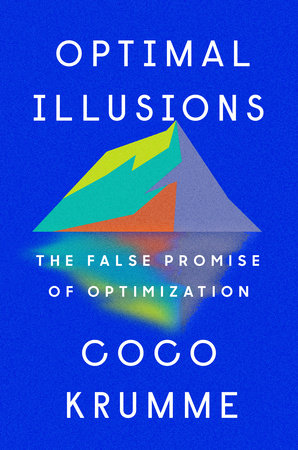Quick Summary
One Sentence Summary
“Jony Ive” by Leander Kahney is an insightful exploration of the life and creative genius of Apple’s iconic designer, revealing the principles and processes behind his groundbreaking designs.
Big Idea
The book delves into how Jony Ive’s design philosophy and meticulous attention to detail revolutionized modern technology, shaping Apple’s most famous products and influencing the broader field of design.
Five Key Ideas
- Early Influences: Explores Ive’s early life and how his passion for design was nurtured.
- Design Philosophy: Unpacks Ive’s design ethos, emphasizing simplicity and user experience.
- Collaboration with Steve Jobs: Highlights the dynamic partnership between Ive and Jobs, crucial in Apple’s success.
- Innovative Process: Details Ive’s innovative design process and his role in creating iconic products like the iPhone and iMac.
- Impact on Technology and Design: Examines Ive’s lasting impact on the tech industry and his influence on future designers.
Actionable Advice
Embrace simplicity and focus on the user experience in any creative or design endeavor. Also, value the importance of collaboration and mentorship in achieving innovative outcomes.
About the Author
Leander Kahney is a journalist and author known for his expertise in technology and design, particularly in relation to Apple and its influential figures.
Read Next
For those interested in the broader context of Apple’s rise, “Steve Jobs” by Walter Isaacson provides an in-depth look at the co-founder’s life. To understand the business side, “The Innovator’s Dilemma” by Clayton M. Christensen is a must-read. For a focus on design principles, Don Norman’s “The Design of Everyday Things” offers valuable insights.
In Depth
Early Influences
Jony Ive’s journey into design began in childhood. His fascination was evident early on, nurtured by his father, a silversmith and educator. This familial influence instilled in Ive a deep respect for craftsmanship and an understanding of materials.
Ive’s education played a pivotal role. At Newcastle Polytechnic, he honed his skills, focusing on industrial design. This period was crucial, solidifying his design principles and work ethic. It was here that he began to marry functionality with aesthetics, a hallmark of his later work at Apple.
An example that stands out is Ive’s student project, a phone. It wasn’t just any phone; it was a phone designed with the user in mind. This project foreshadowed his future success. It wasn’t about adding features; it was about creating an experience. This approach, focusing on the user’s needs, became a cornerstone of his design philosophy.
Kahney quotes Ive, highlighting this mindset:
“Our goal is to desperately try to make the best products we can… We’re trying to develop products that seem somehow inevitable. That leave you with the sense that that’s the only possible solution that makes sense.”
This quote encapsulates Ive’s early influences. His focus on creating products that feel “inevitable” and user-centric started long before Apple. These early experiences, the influence of his father, his education, and his early projects, all laid the foundation for the designer he became. They shaped his commitment to excellence, his relentless pursuit of simplicity, and his dedication to creating products that not only function well but also delight and inspire.
Design Philosophy
Jony Ive’s design philosophy is marked by a relentless pursuit of simplicity. He believes in stripping away the unnecessary, focusing on the essence of a product. It’s not minimalism for the sake of it, but a deep-seated belief that simplicity leads to better, more functional design.
A defining example is the creation of the first iMac. Ive and his team revolutionized personal computing by introducing a computer that was not only powerful but also visually appealing. The iMac G3, with its translucent, candy-colored shell, stood in stark contrast to the beige boxes of the time. It wasn’t just a computer; it was a design statement. This approach transformed the way people saw technology. It wasn’t just about specs; it was about how the product fit into and enhanced users’ lives.
Kahney captures Ive’s ethos with this quote:
“Our goal is simplicity, not the simple. True simplicity is derived from so much more than just the absence of clutter and ornamentation—it’s about bringing order to complexity.”
This quote illustrates the crux of Ive’s design philosophy. Simplicity, for him, isn’t merely about what you can see; it’s about how everything, seen and unseen, comes together to create an experience that feels intuitive and effortless. This philosophy drove the design of products like the iPhone, where the complex technology is hidden behind a user interface so simple that a child can understand it.
Ive’s dedication to this philosophy is evident in the attention to detail he demands, from the materials used to the feel of a button click. He pushed for innovation not only in the look of a product but also in how it’s manufactured. For instance, the unibody design of the MacBook was a result of this thinking. It wasn’t the easiest or cheapest route, but it was the one that led to a product that met his rigorous standards for simplicity, elegance, and functionality.
Jony Ive’s design philosophy isn’t just about creating beautiful products. It’s about creating products that make sense, that connect with the user on an almost intuitive level. This philosophy has not only shaped the products he’s worked on but also influenced a generation of designers to think about how design and functionality can coexist in harmony.
Collaboration with Steve Jobs
Jony Ive’s collaboration with Steve Jobs was transformative. Their partnership at Apple wasn’t just about building products; it was about building a vision. They shared a belief in design’s power to change lives, making their collaboration impactful and historic.
The development of the iPhone exemplifies this collaboration. Jobs and Ive shared a vision of a phone that was entirely screen, a radical idea at the time. They pushed boundaries, challenged engineering norms, and faced numerous setbacks. Yet, their shared determination and mutual respect led to the creation of a device that redefined the smartphone industry.
Kahney highlights the depth of their partnership with this quote from Ive:
“Steve and I spent months and months working on a part of a product that, often, nobody would ever see, nor realize was there. It was the care and the love that we put into it that was our reward.”
This quote reveals the essence of their partnership. Jobs and Ive didn’t just care about the end product; they cared about every detail, even those invisible to the user. This meticulous attention to detail was a cornerstone of their work together.
Their relationship was more than just professional; it was deeply personal. Jobs was not just a boss to Ive; he was a mentor and a friend. They challenged and inspired each other, pushing Apple to heights that might have seemed impossible. This unique synergy between them was a driving force behind Apple’s renaissance in the late 1990s and 2000s.
The creation of the iMac, iPod, iPhone, and iPad—products that have defined modern technology—can be traced back to the creative synergy between Jobs and Ive. They didn’t just design products; they crafted experiences. They understood that technology was not just about features and specifications; it was about how it fit into and improved the user’s life.
This collaboration between Jony Ive and Steve Jobs will be remembered as one of the most significant in the history of technology and design. Their shared vision and unwavering commitment to excellence set a standard for what technology could be and opened a world of possibilities for design and innovation.
Innovative Process
Jony Ive’s innovative process is characterized by a relentless pursuit of perfection and an unwavering commitment to pushing boundaries. He didn’t just design products; he reimagined what they could be, consistently challenging the status quo.
The creation of the Apple Watch serves as a prime example. Ive didn’t approach it merely as a tech gadget; he envisioned it as a piece of personal fashion, an intimate accessory. This vision led to extensive research into watchmaking and materials. It wasn’t just about adding a digital screen to a wristband; it was about redefining what a watch could be in the modern world.
Kahney captures the essence of Ive’s process with this quote:
“The pursuit of making something that appears so simple, so effortless, is a remarkably complicated and, often, frustrating path.”
This quote embodies the paradox at the heart of Ive’s approach. The simplest designs often require the most complex processes. His pursuit of simplicity was not a straightforward path; it involved countless iterations, prototypes, and a willingness to start over when something wasn’t right.
Ive’s process also involved an intense focus on materials. He pushed for the use of aluminum in Apple products, not just for its aesthetic but for its functional qualities. This led to innovations in manufacturing, like the unibody design in MacBooks, which was both a design and engineering feat.
Collaboration was key in Ive’s process. He worked closely with engineers, software designers, and other team members. This collaborative approach ensured that design considerations were integrated throughout the product development process, not just added as an afterthought.
Ive’s innovative process was not just about creating products; it was about creating experiences. He understood that people don’t just use a product; they interact with it, form a relationship with it. His process was rooted in empathy for the user, constantly asking how a design choice would impact the person using it.
Jony Ive’s innovative process has left an indelible mark on the technology industry. His approach to design, his meticulous attention to detail, and his relentless pursuit of perfection have not only resulted in groundbreaking products but have also raised the bar for what is expected in design and technology.
Impact on Technology and Design
Jony Ive’s impact on technology and design extends far beyond the products he created. His approach to design has influenced a generation of designers and reshaped the technology industry.
A clear example is the design of the iPhone. Before its introduction, mobile phones were utilitarian devices with small screens and physical keypads. The iPhone, with its sleek design, large touchscreen, and intuitive interface, revolutionized the industry. It set a new standard for smartphones, one that competitors rushed to emulate.
Kahney illustrates this impact with a quote from Ive:
“What we make completely testifies to who we are.”
This quote underscores how Ive’s designs were not just products but representations of a philosophy. The clean lines, the intuitive interfaces, and the seamless integration of hardware and software in Apple products reflected a belief in simplicity, user-friendliness, and elegance.
Ive’s influence is evident in the broader design world as well. His focus on minimalism and functionality inspired designers across various fields, from consumer electronics to automotive design. The emphasis on simplicity and user experience became guiding principles for many.
Beyond specific design elements, Ive’s legacy includes a broader cultural shift in how people interact with technology. He helped transform technology from something that was merely functional into something deeply personal and integral to daily life.
His impact can also be seen in the way companies approach product development. Ive demonstrated the importance of integrating design into every aspect of product development, influencing how companies structure their design and engineering teams.
Jony Ive’s impact on technology and design is profound and enduring. His work has not only defined an era of technology but also laid the groundwork for future innovations. His design philosophy and approach continue to inspire designers and innovators, shaping the way we think about and interact with technology.
Actionable Advice
- Embrace Simplicity: Strive for clear, clean designs that focus on functionality.
- User-Centric Approach: Design with the user’s needs and experiences in mind.
- Attention to Detail: Pay attention to the small things; they often make the biggest difference.
- Embrace Collaboration: Work closely with others, valuing different perspectives and expertise.
- Push Boundaries: Don’t be afraid to challenge the status quo and explore new ideas.
- Integrate Design and Engineering: Ensure design is a key part of the product development process, not an afterthought.
- Learn from Failures: Use setbacks as opportunities to learn and refine your approach.
- Understand Materials: Get to know the materials you work with and how they can influence your design.
- Seek Mentorship: Find mentors who can guide and inspire you in your creative journey.
- Create Experiences, Not Just Products: Aim to create something that connects with users on a deeper level.
About the Author
Leander Kahney is a journalist and author, best known for his work on Apple and its iconic figures. As a former managing editor at Wired.com and news editor at MacWeek, he has deep roots in technology journalism. Kahney’s books, including “Inside Steve’s Brain” and “Jony Ive: The Genius Behind Apple’s Greatest Products,” reflect his keen interest in the intersection of technology, innovation, and personal stories. His writing style combines detailed reporting with engaging narratives. Kahney’s belief in the transformative power of technology and design shines through his works. He has a reputation for providing insightful, behind-the-scenes looks at the tech industry, particularly Apple. His fascination with figures like Steve Jobs and Jony Ive stems from their impact on modern tech culture and design philosophy. Through his books, Kahney not only chronicles their professional journeys but also delves into their personal beliefs and how these shaped the tech world. His commitment to thorough research and accessible writing makes him a respected figure in tech journalism.
Read These Next
You might like these similar books
- “Steve Jobs” by Walter Isaacson
- “Becoming Steve Jobs” by Brent Schlender and Rick Tetzeli
- “Insanely Simple: The Obsession That Drives Apple’s Success” by Ken Segall
- “The Apple Experience: Secrets to Building Insanely Great Customer Loyalty” by Carmine Gallo
- “Creative Selection: Inside Apple’s Design Process During the Golden Age of Steve Jobs” by Ken Kocienda
FAQ
Q: Who is Jony Ive?
A: Jony Ive is a renowned British designer, known for his role as the Chief Design Officer at Apple, where he led the design of groundbreaking products like the iPhone and MacBook.
Q: What is the book ‘Jony Ive’ about?
A: The book provides an in-depth look at Jony Ive’s career, design philosophy, and his contributions to Apple’s iconic product designs.
Q: Is this book suitable for non-designers?
A: Yes, it’s written in an accessible style and offers insights not just into design but also into innovation and technology.
Q: Does the book cover Jony Ive’s relationship with Steve Jobs?
A: Yes, it delves into their collaborative work and the significant impact of their partnership on Apple’s success.
Q: Are there any actionable insights in the book?
A: Absolutely. The book provides valuable advice on design, collaboration, and innovation, applicable to various fields.
Q: Who would benefit from reading this book?
A: It’s ideal for designers, tech enthusiasts, Apple fans, and anyone interested in understanding how great design shapes products and experiences.







